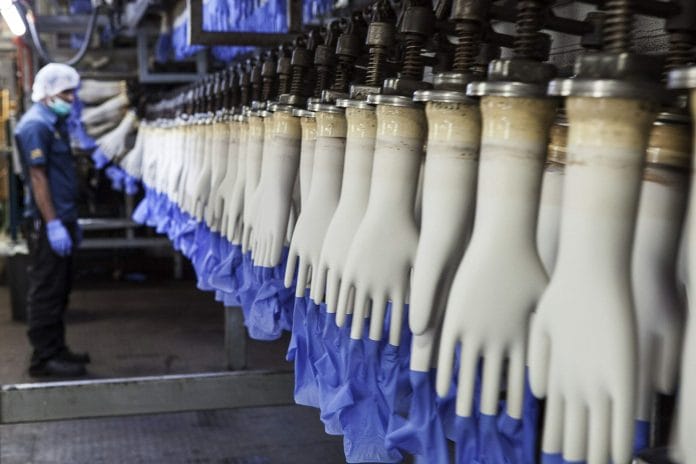Malaysia’s Glove industry players either were in the red or reported tepid profits in 4QCY23, with only one beating expectations.
Kenanga Investment Bank’s (Kenanga) Sector Update today (Mac 7) said the undertone suggests the sector’s recovery path remains bumpy amidst continued weak demand, massive overcapacity and predatory pricing by certain overseas players.
On a slightly brighter note, further decommissioning of older production facilities locally should help to ease supply pressure, at least bringing about more rational competition amongst local players.
Following a premature run-up in their share prices, Kenanga avoids all names under their coverage, namely HARTA (UP; TP: RM2.33), KOSSAN (UP; TP: RM1.48), SUPERMX (UP; TP: RM0.84) and TOPGLOV (UP; TP: RM0.75).
Less earnings surprise
There was a slight sequential weakening in earnings delivery (against Kenanga’s expectations) by the sector in the recently concluded 4QCY23 reporting season with 25%/50%/25% of results coming above/within/below compared to 50%/20%/25% in 3QCY23.
Out of the four companies under Kenanga’s coverage, only one beat their forecast (KOSSAN), while two came in within (HARTA and TOPGLOV) and one disappointed (SUPERMX).
Despite registering a second consecutive quarterly profit, KOSSAN and HARTA’s 4QCY23 bottom line was lower QoQ, dragged down by subdued sales volume and sustained high input nitrile butadiene rubber price.
On the other hand, SUPERMX and TOPGLOV suffered their 5th and 6th consecutive quarterly losses, respectively, due to sale of high-priced inventory at falling market prices, subdued sales volume coupled with lower overhead absorption on the back of less-than-optimum utilisation rate.
Still challenging, no V-shaped recovery with lofty valuations moving into CY24
While some players have returned to the black since 3QCY23, albeit with only some small profits, Kemanga believes the sector will continue to face volatile earnings ahead, no thanks to weak demand and stubbornly high nitrile butadiene rubber prices.
The industry expect volatile quarterly sales order as distributors and buyers sees no urgency to place sizeable orders or hold substantial stocks as supply is plentiful and readily available.
Kenanga expects the operating environment to remain challenging in subsequent quarters, plagued by predatory pricing by certain overseas players (i.e. selling below cost over an extended period of time to eliminate competitors) and massive oversupply.
Overall, the industry is cautious about raising prices (to fully pass on the higher input cost) given the still competitive landscape in the industry. This falls in line with Kenanga’s view that raising ASP over the immediate term will be challenging.
With a low industry utilisation of about 40%, this is without a doubt still a buyer’s market.
Oversupply to persist.
Based on Kenanga’s estimates, the demand-supply situation will only start to head towards equilibrium in CY26 when there is virtually no more new capacity coming onstream while the global demand for gloves continues to rise by 15% per annum underpinned by rising hygiene awareness.
MARGMA projects 12%−15% global demand growth for rubber gloves annually from CY23, following an estimated 25% contraction to 300b pieces in CY23.
Kenanga projects the demand for gloves to rise by 30% in CY24 to 390b pieces (due to a low base effect in CY23) and resume its organic growth of 15% thereafter. This will result in an excess capacity of 212b pieces in CY24.
The overcapacity still persists which means low prices and depressed plant utilisation will continue to plague the industry in CY24.
Assumptions. Kenanga’s CY24 forecasts assume: (i) an ASP per 1,000 pieces of USD20 similar to CY23, and (ii) an average plant utilisation of 45% vs. an estimated 40% in CY23.
In the meantime, Kenanga does not have any top pick for the sector.









